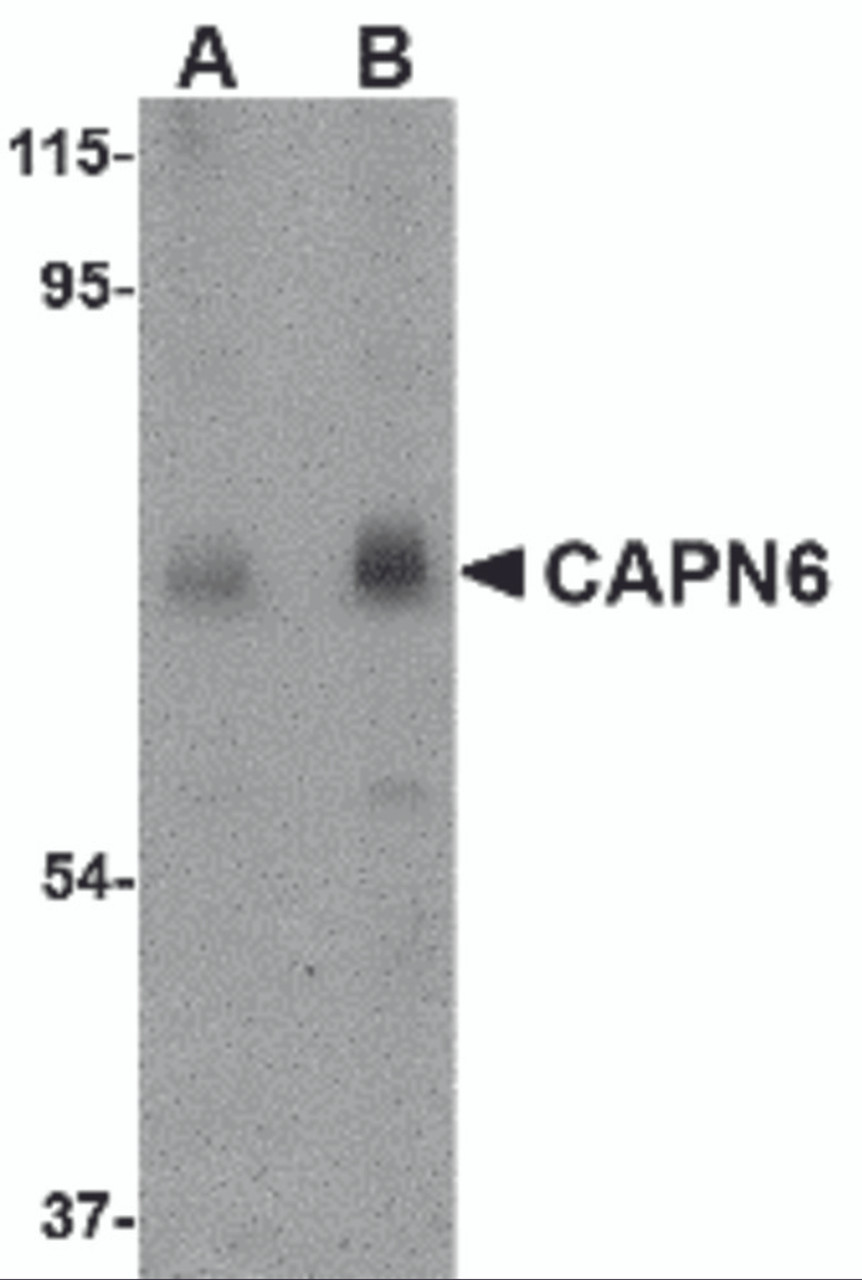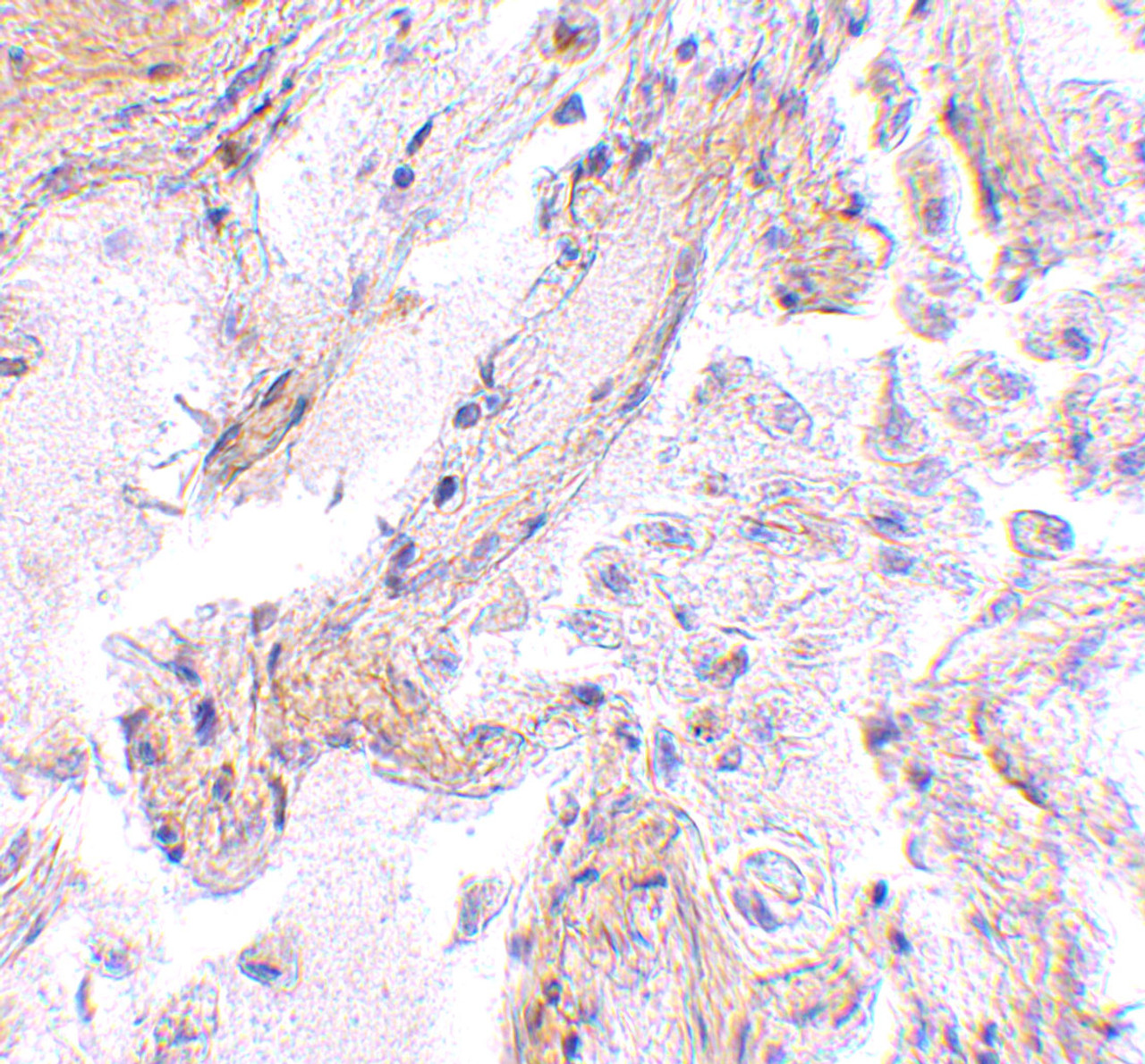Product Description
CAPN6 Antibody | 4759 | ProSci
Host: Rabbit
Reactivity: Human, Mouse, Rat
Homology: N/A
Immunogen: CAPN6 antibody was raised against a 18 amino acid synthetic peptide from near the carboxy terminus of human CAPN6.
The immunogen is located within the last 50 amino acids of CAPN6.
Research Area: Infectious Disease
Tested Application: E, WB, IHC-P, IF
Application: CAPN6 antibody can be used for the detection of StrepII by Western blot at 0.5 - 1 μg/mL. Antibody can also be used for immunohistochemistry starting at 2.5 μg/mL. For immunofluorescence start at 20 μg/mL.
Antibody validated: Western Blot in rat samples; Immunohistochemistry in human samples and Immunofluorescence in human samples. All other applications and species not yet tested.
Specificiy: N/A
Positive Control 1: Cat. No. 1462 - Rat Lung Tissue Lysate
Positive Control 2: Cat. No. 10-101 - Human Lung Tissue Slide
Positive Control 3: N/A
Positive Control 4: N/A
Positive Control 5: N/A
Positive Control 6: N/A
Molecular Weight: N/A
Validation: N/A
Isoform: N/A
Purification: CAPN6 Antibody is affinity chromatography purified via peptide column.
Clonality: Polyclonal
Clone: N/A
Isotype: IgG
Conjugate: Unconjugated
Physical State: Liquid
Buffer: CAPN6 Antibody is supplied in PBS containing 0.02% sodium azide.
Concentration: 1 mg/mL
Storage Condition: CAPN6 antibody can be stored at 4˚C for three months and -20˚C, stable for up to one year. As with all antibodies care should be taken to avoid repeated freeze thaw cycles. Antibodies should not be exposed to prolonged high temperatures.
Alternate Name: CAPN6 Antibody: CANPX, CAPNX, CalpM, DJ914P14.1, CALPM, CANPX, Calpain-6, Calpain-like protease X-linked
User Note: Optimal dilutions for each application to be determined by the researcher.
BACKGROUND: CAPN6 Antibody: Calpains make up a ubiquitously expressed, well-conserved family of calcium-dependent cysteine proteases. The calpain proteins are heterodimers consisting of an invariant small subunit and variable large subunits. This large subunit possesses a cysteine protease domain, and both subunits possess calcium-binding domains. Calpains have been implicated in neurodegenerative processes as their activation can be triggered by calcium influx and oxidative stress. Calpain 6 (CAPN6) is most similar to Calpain 5; the C-terminal region of CAPN6 lacks homology to the calmodulin-like domain of other vertebrate calpains. CAPN6 is thought to be involved in the regulation of microtubule dynamics and cytoskeletal organization. CAPN6 has also been recently identified as an HIV dependency factor (HDF) , suggesting that CAPN6 may be an important drug target in HIV treatment.
 Euro
Euro
 USD
USD
 British Pound
British Pound
 NULL
NULL











![CAPN6 Antibody [AMM02517G] CAPN6 Antibody [AMM02517G]](https://cdn11.bigcommerce.com/s-452hpg8iuh/images/stencil/500x659/products/869713/1161780/logo__92149.1659788186__09603.1659865859.png?c=2)




